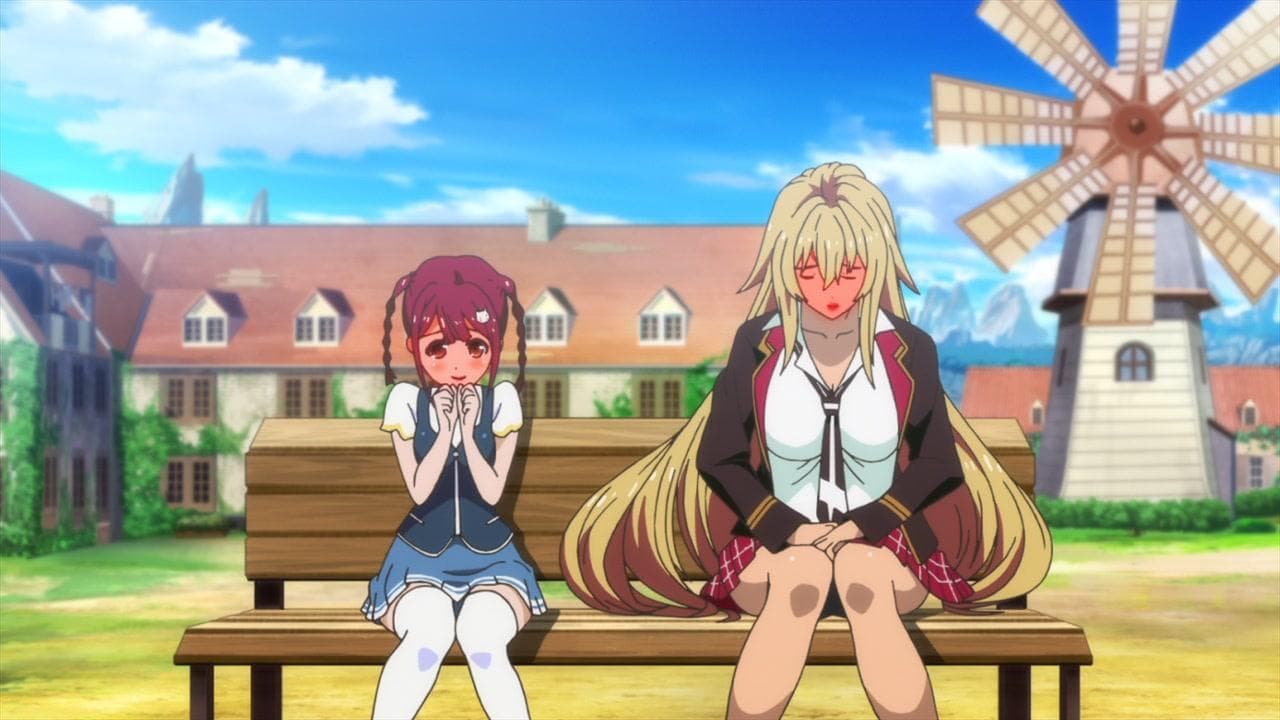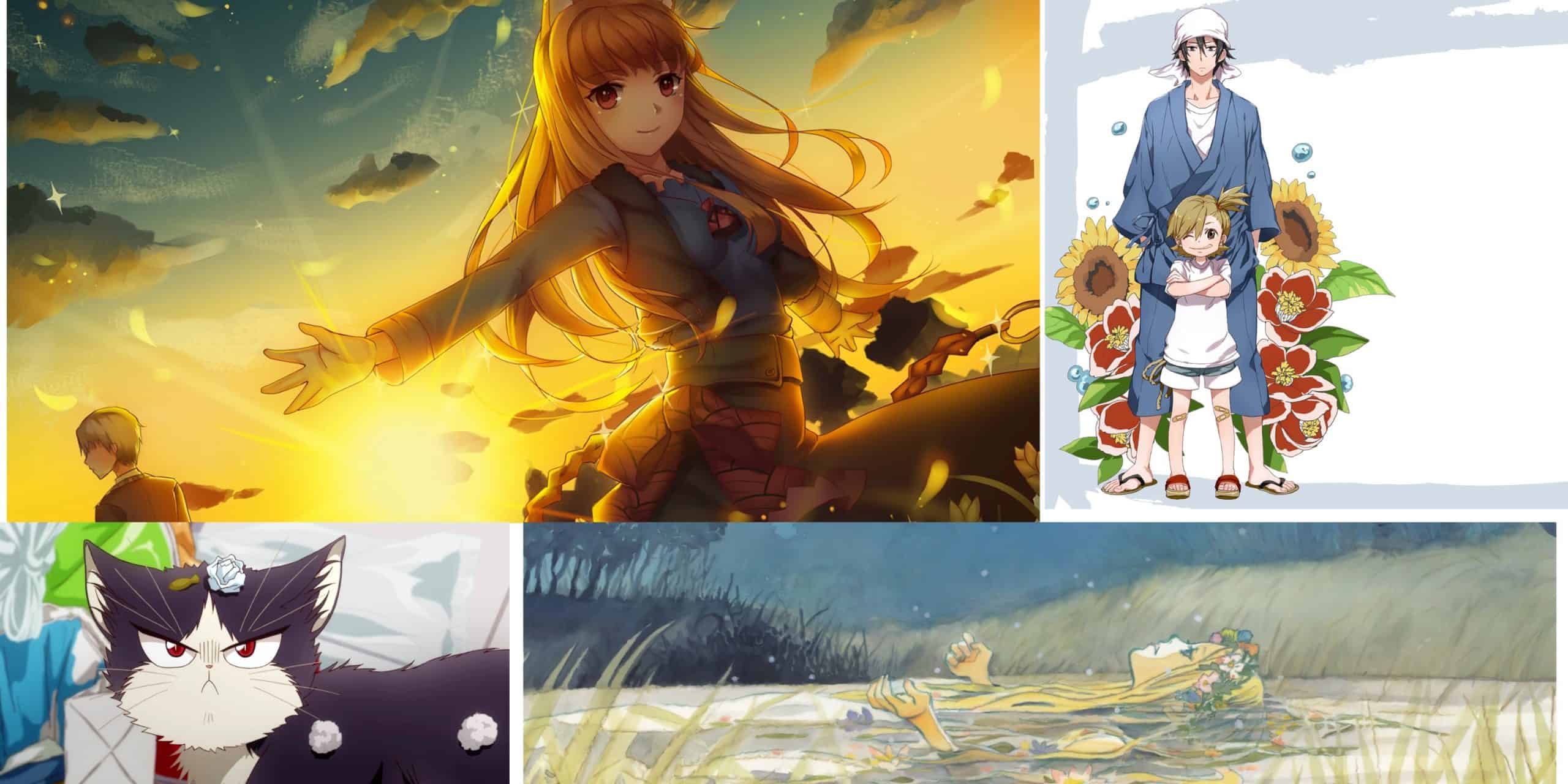Anime is, by its own nature, dynamic and exciting. You are left wondering what happens following the television commercial break, the episode, and maybe even the whole run of the show.
The genre of “slice of life” stories has always been hugely popular in the world of anime because it focuses on the ordinary, everyday events in the lives of its protagonists rather than any great heroic quest.
But that does not suggest they aren’t funny, enjoyable, and frequently totally creative. There is a diverse legacy of slice-of-life anime, and we’re honoring the finest of it.
Examples include the antics of a candy store, an animal-run café, a band anime with a long-standing audience, and a cute little child living alone.
Few storytelling mediums are as infinitely adaptable as anime. The many animation techniques that anime may use are incredibly creative, but the several different types of media that it can also explore make the medium additionally fascinating.
1. Shirokuma Café
In the movie Polar Bear Café, a variety of animals, including a panda, a penguin, a llama, and a sloth, frequent a café run by the film’s title character.
Animals make up the majority of the group, with a few strange humans thrown in here and there, such as the eternally upbeat Sasako, the incompetent zookeeper Handa, and the panda-obsessed florist Rin-Rin.
Animals that are so well-integrated into civilization that no one notices them, whether they’re walking around town casually purchasing groceries, working in a bakery, or managing a bar.
Nevertheless, there is a working zoo where a few of the characters really work! After a few episodes, you start to kind of take this odd environment for granted; it simply works.
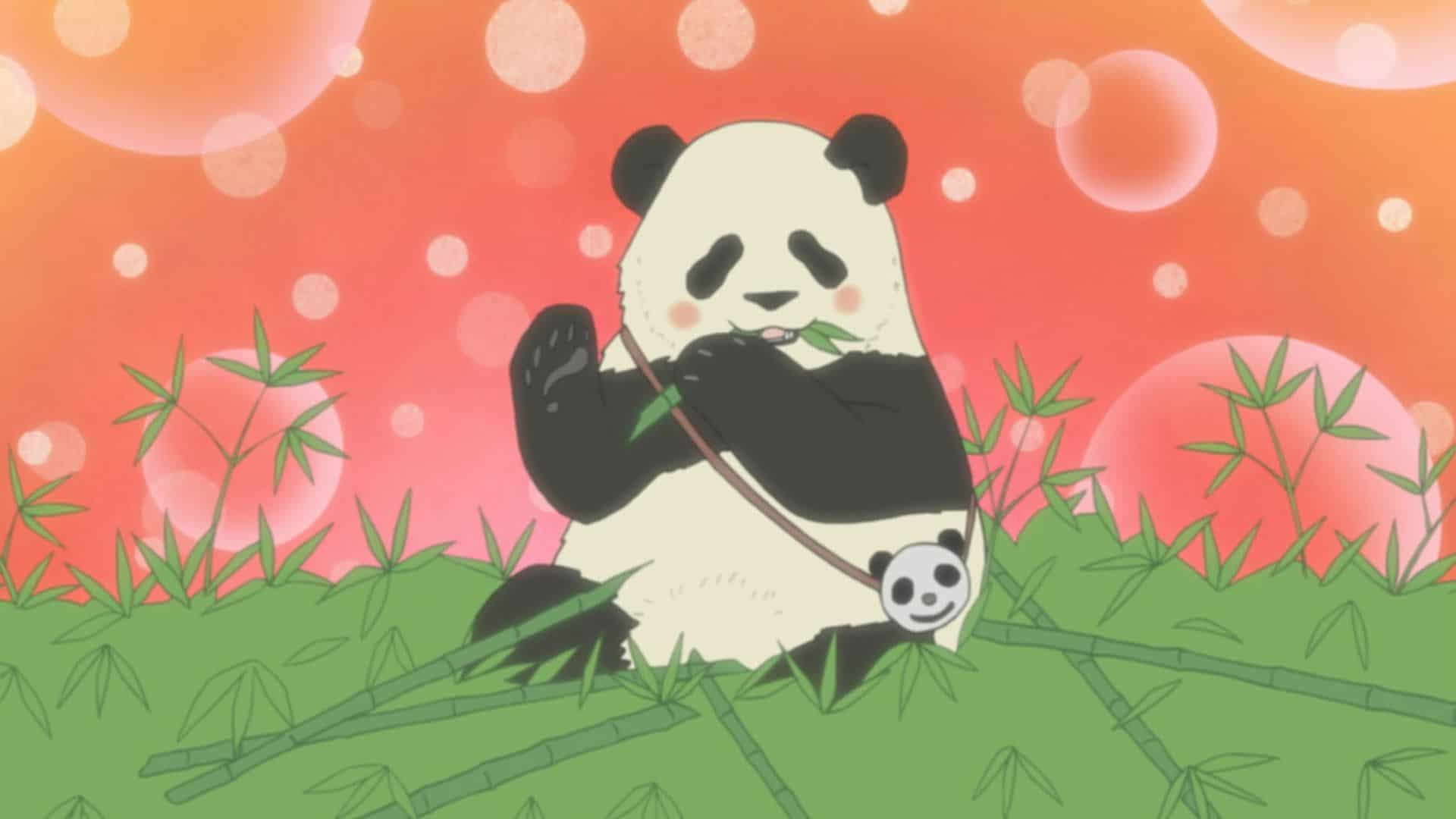
The show’s primary four, Polar Bear, Penguin, Panda, and Sasako, just have fantastic chemistry and play off each other well. The supporting cast is probably what kept me watching it so much.
The supporting cast members are also fantastic, and everyone gets their own episode to shine; my favorites have to be Grizzly, the bartender and long-time buddy of Polar Bear from infancy, and the misunderstood but totally endearing Llama.
The animation is fairly basic yet adequate and was created by Studio Pierrot. Given that many of the animals lack the typical facial traits that humans use to judge emotion, the animals’ drawings are excellent and unexpectedly expressive.
The overall aesthetic of the program is rather delicate and pastel, and clever use is made of glitter, bubbles, hearts, flowers, and sweat drops to highlight jokes or feelings.
On the other hand, Sasako, in particular, has utterly lifeless eyes that are really unsettling. Humans, in general, are genuinely scared by their lack of expression.
2. Kotaro Lives Alone
Kotaro is an odd four-year-old boy who lives alone. Kotaro behaves like a respectable elderly guy from another era and shows maturity.
A modest manga artist shares an apartment with Kotaro. They will eventually start becoming along as they devote greater quantities of time together.
In the anime Kotaro Lives Alone, shattered people find friendship and work through their wounds.
The show delivers a sweet and moving tale while tackling subjects like family, abandonment, loneliness, and abuse. Each episode consists of several distinct tales that nicely tie together at the conclusion.
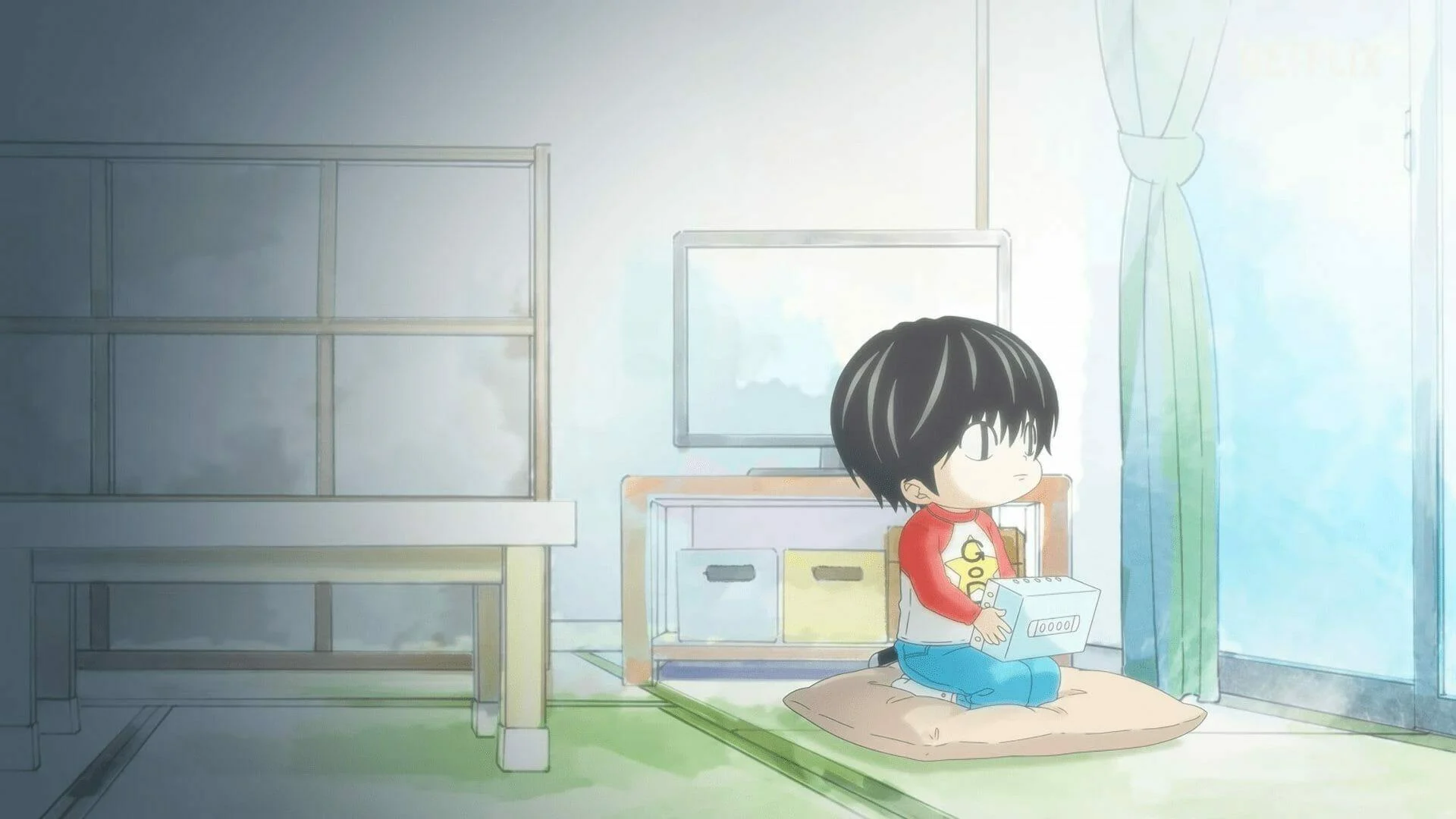
As people relate to Kotaro and demonstrate empathy for him, they learn diverse viewpoints, circumstances, and narratives of various traumas. Approach with caution if you belong to someone who is easily offended by abuse or neglect.
When it confronts these issues, it isn’t overt, but it is important to be aware of. However, there are plenty of touching scenes to make up for it, and you’ll definitely weep throughout those as well.
A boy lives alone in the apartment complex and is cared for by neighbors as if he were their own child. The kid experience certain trauma from his early years when he was mistreated and abused.
Although the developers did a terrific job of gently revealing it, it is actually fairly simple. Before releasing another piece of knowledge that furthers your emotional damage, they actually give you time to process your feelings.
3. Nana
Nana is a show that doesn’t really do wishy-washy; instead, it’s a serious, mature, and realistic relationship that, in my opinion, provides something unique in comparison to other programs in the same category. Additionally, this program excels at dealing with the entire slice of life.
The plot portrayed in the first episode will undoubtedly catch your attention, so even if you aren’t seeking a romance, this show will be interesting to your tastes through other avenues.
The sitcom draws its name from the two main characters, who also happen to have the same name, Nana.
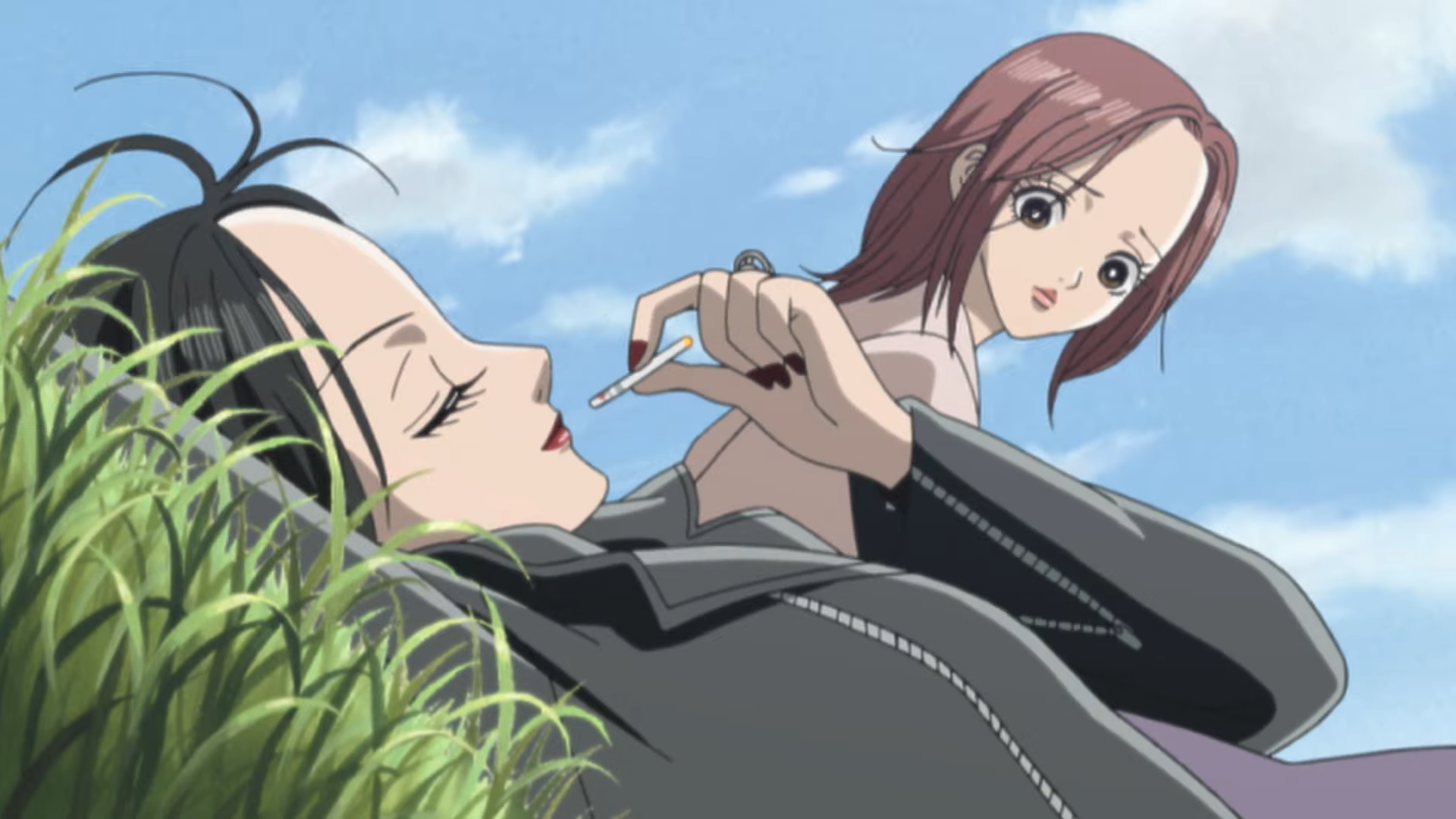
If you or any of you are wondering just how trustworthy the software is, it begins with a string of coincidences to establish the scene.
We will refer to our first Nana by the name of her pet, Hachiko, in order to distinguish her from the other Nana. She is a 20-year-old naïve woman who relocates to Tokyo in order to be nearer to her beloved.
Their acquaintances have all moved there to pursue their careers, leaving her alone behind in her hometown with no clear reason to go there.
After a year, Nana chooses to relocate to Tokyo, still without a specific aim in mind, after deciding to leave her liberal parents and two sisters behind. She is on the commuter rail to sit because all but one seat is gone as the concert opens.
Nana Osaki, the additional 20-year-old Nana, just so happened to be sitting nearby. This Nana represents the stereotype of the pure punk rock singer quite well with her black lipstick, piercings, and guitar in a bag.
Nana extends a kind invitation to Hachiko to sit with her. Nana wants to reside in Tokyo in order to realize her dream of becoming the lead singer of a well-known punk rock band.
4. Honey and Clover
The story of Honey and Clover centers on the lives of five college students as they attempt to overcome all the difficulties brought on by their love. Honey and Clover are both amusing and tragic, and they have already found a place in my romantic heart.
The five protagonists in the book are college students who study architecture and art. With their love triangles, misunderstandings, and future goals, their lives are incredibly complicated.
Takemoto is seen at the beginning of the series at his dorm, and as it goes on, you gradually learn more about the other characters.
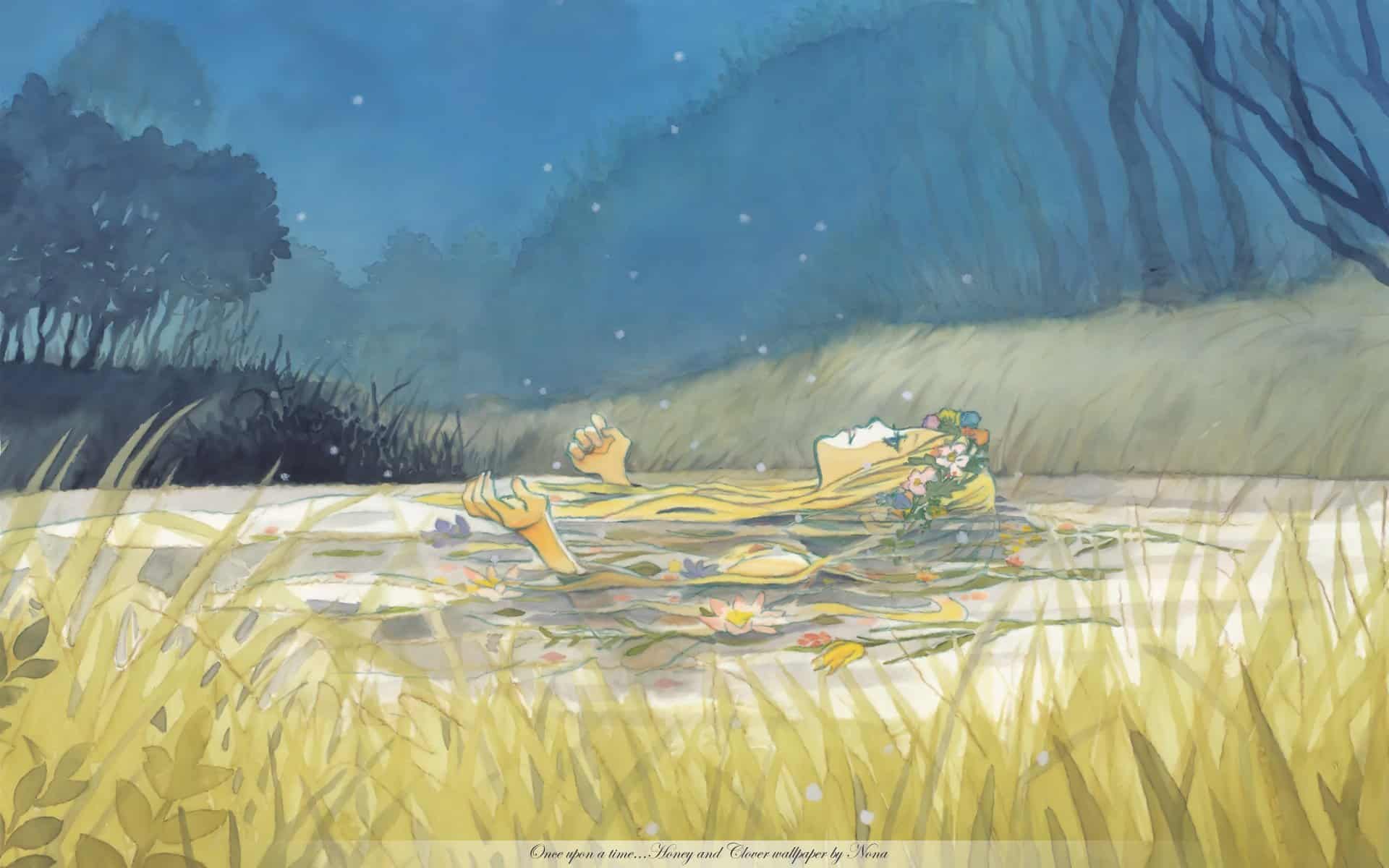
He studies architecture and is a cheerful, laid-back, and tranquil young man—the prototypical Japanese nice guy.
When he spotted Hagumi Hanamoto at their school in the shade of the cherry blossoms, he instantly fell in love with her. Since then, as he came to know her better, he has grown more and more in love.
Morita, a sixth-year art student, was unable to complete her degree due to chronic absences from class. Since he is a truly talented artist, it is mostly because of his artistic work.
He paints and even creates sculptures. Together with his close pals Takemoto and Mayama, he shares a dormitory.
Although Morita is enigmatic and a little strange as well, he always exudes pleasant feelings and strong energy. Despite being tactless most of the time, he is a fantastic, fun-loving buddy
. A genius, Hagu. A talented artist. Everyone adores her art and finds her crafts and paintings to be fantastic. She’s also rather queer, a shy, lovely girl who spends much of her time making beautiful art.
Ayumi was the buddy she eventually found in the series. Takemoto, however, was the one who initially noticed her and fell in love with her far before anybody else. But Morita also falls in love with her. The three also contend with their love triangle.
5. Tamako Market
Tamako Market will make you weep both happy and sad tears. Unfortunately, this slice of life’s analytical shortcomings allows its remarkable relationship and upbeat way of living to be overlooked.
Tamako is a high school student and the offspring of a mochi maker. Her encounter with Dera, the talking bird, does nothing to alter her way of life.
As the bird moves toward her household, the anime’s depiction of the lives of those who work in the marketplace continues.
Tamako Market is one of the aforementioned anime that suffers from the problem of not having enough episodes to fully develop each character. Let’s begin with Tamako, the main character. She may be a compelling figure, but she lacks depth.
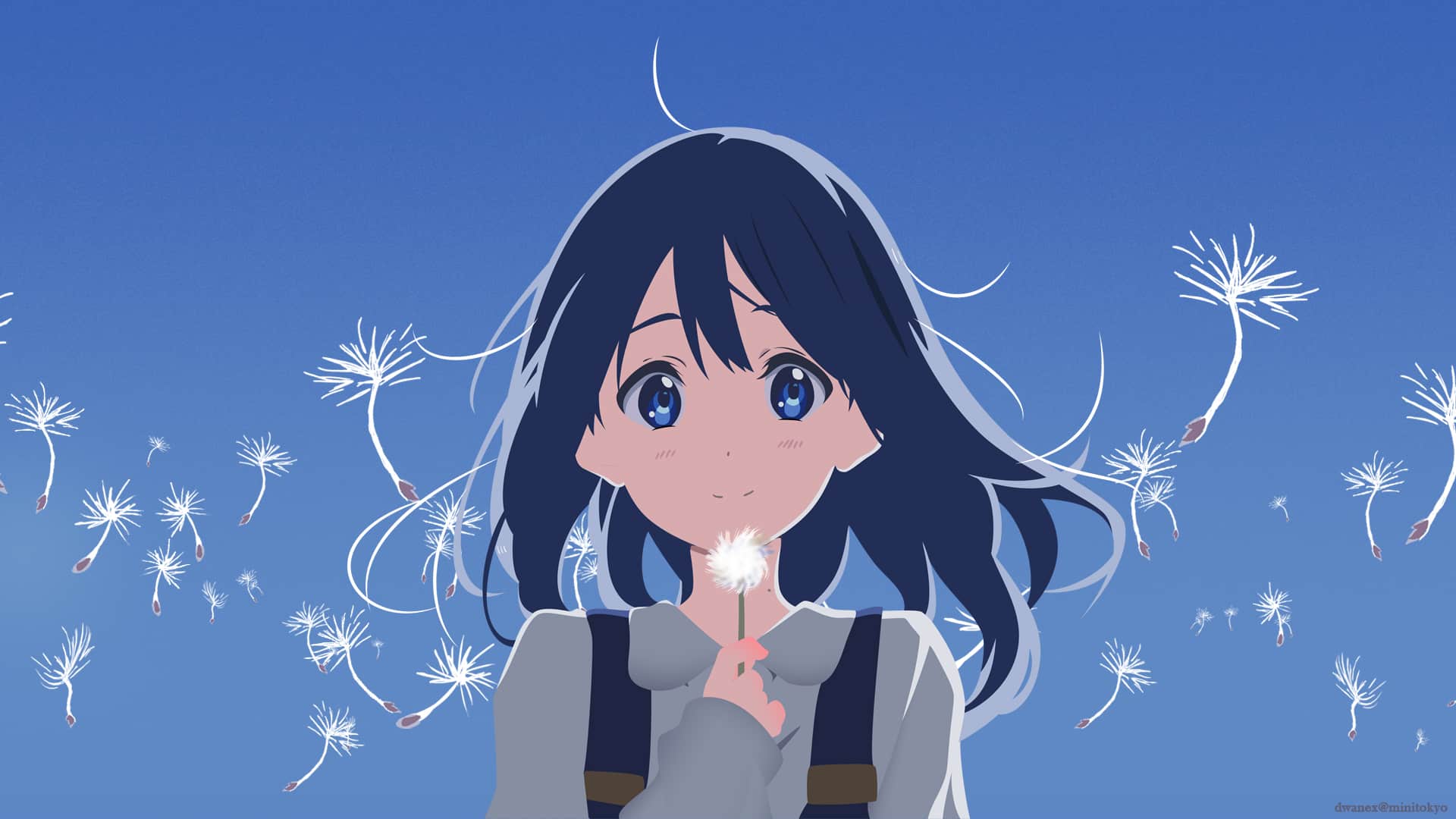
Her upbeat outlook maintains her flat, and is dependable in any upcoming situation. Although his battle to get Tamako’s attention is a fascinating one, some of their phone talks seem a bit needless.
Additionally, it seems as though his rivalry with Midori is purely for comic relief. Midori’s affection for the main character seems to emerge out of thin air and lacks any rational justification.
Other pals of Tamako include some dull people. Shiori plays a key role in certain episodes but is mostly ignored in others. Kanna is close to leaving an enduring impression despite her distinctive speaking expression.
The majority of the neighbors are only there to fill in the blanks; we learn very little about them. Despite getting less screen time than the heroine, Anko, Tamako’s younger sister, is more fully realized.
She exhibits a variety of personality traits in various contexts, and her character truly stands out from the crowd. Dera, the bird, is arguably the show’s finest character.
Although he may be despised by some, his character development is intriguing and distinctive, and the moods he establishes provide many of the key backdrops for the narrative.
6. My Roommate is a Cat
Subaru: A writer named Mikazuki finds social interaction exhausting and despises leaving his residence. He chooses to bring a stray cat home after coming upon her.
He calls the feline “Haru.” Each episode shows how Haru and his friends affect Mikazuki’s life and how Mikazuki changes Haru’s life as well after meeting him.
We can relate to Mikazuki so much. We both enjoy reading, detest being outside, and neglect our personal hygiene. Mikazuki might not be well-liked by certain viewers since he doesn’t like social interactions, but I believe he’s really cute. He enjoys reading books and alone time.
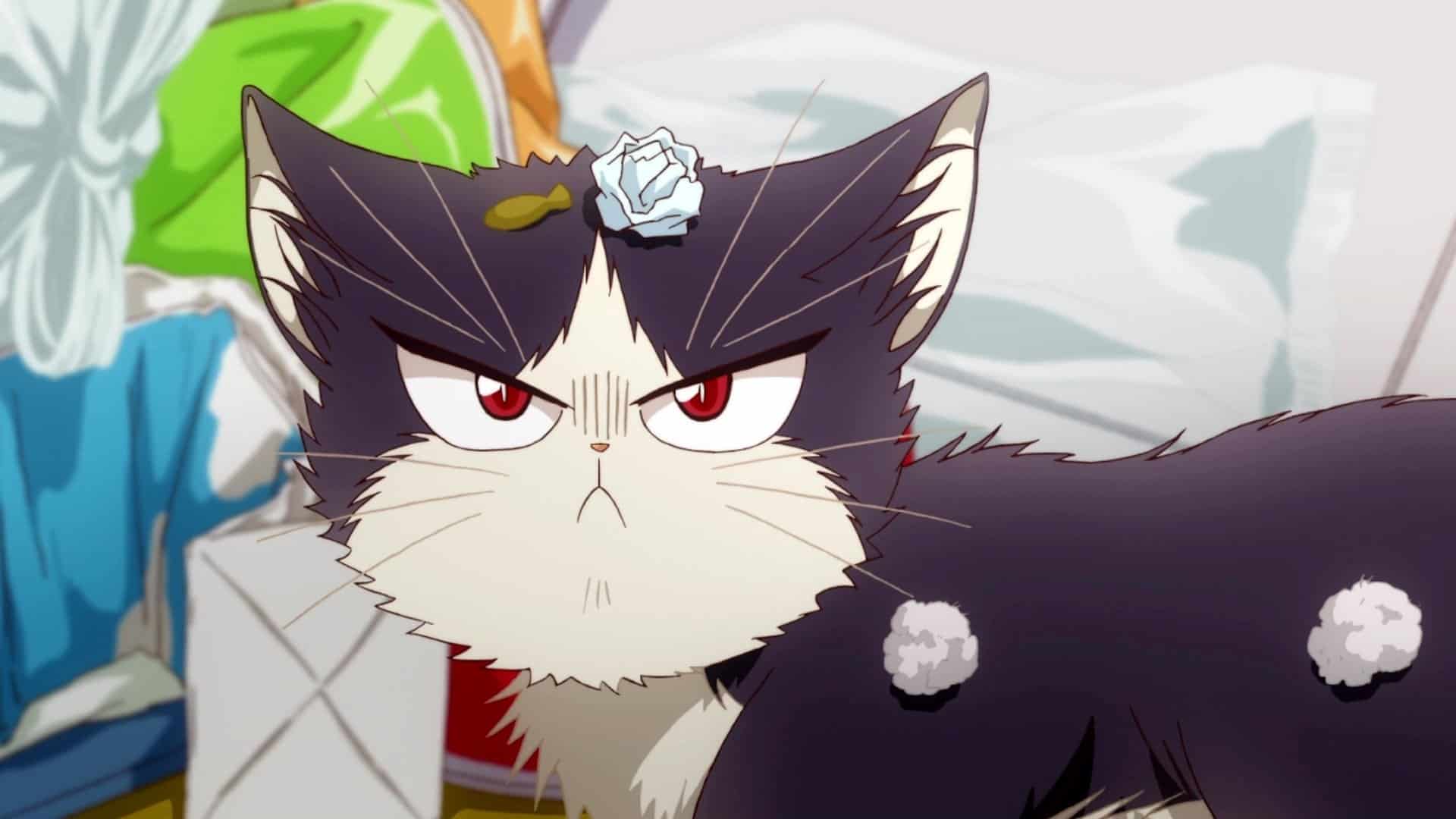
When my classmates requested me to sit down and study with them, I used to constantly answer “no.” I find that I learn best on my own.
Therefore, I reasoned that studying with others would be too time-consuming. This year, I worked efficiently while studying at a café with a few of my peers. I definitely appreciated the study assistance we provided for one another.
There are always opportunities for personal development. Mikazuki doesn’t necessarily need to change, but I believe meeting Haru was a pretty positive development for him.
Haru benefited from it as well. We discover Haru’s history and the details of her wandering life. Mikazuki won’t be aware of Haru’s past or innermost feelings, but we are far more familiar with Haru. She has a really amazing personality.
7. Whisper of the Heart
“Whisper of the Heart” fulfills all the requirements for a Miyazaki film. It has a strong female lead, an emotional plot, wonderful characters, a setting, and an impactful conclusion. It’s difficult to imagine that it isn’t a Miyazaki movie.
It is only reasonable to believe that Miyazaki directed the movie as it is a Studio Ghibli production. It’s possible that viewers who don’t know it’s a non-Miyazaki production wouldn’t realize it until the very end.
A girl in her early teens named Shizuku Tsukishima is a bookworm who discovers that practically every book she takes out to read has been taken out on loan by a male.
Even if it’s cliche, it’s still a nice thing to happen at that age. The tone for a romantic relationship between teens is exactly what the movie succeeds in creating.

Shizuku is also a deserving character who commands respect right away. She’s such a sweet girl. Many viewers were enamored by her enthusiasm and the director’s skill in shaping her character in that way.
She visits an attractive antique shop by chance after seeing a grouchy cat on the train. After that, her life changed, giving her even more cause to be passionate.
Brilliant design elements include the shop’s meticulous attention to detail and the film’s abundance of stories inside stories. Additionally, the family’s chemistry was outstanding. The movie drags on a bit and loses focus near the end, but summer romances always do.
The movie weaves a variety of themes throughout. The narrative portion becomes depressing. The clarity of what she writes and thinks is not great.
8. The Garden of Words
The movie Garden of Words is really impressive and lovely. The most beautiful piece of shooting I have ever seen, without a doubt.
Garden of Words is guaranteed to gratify even the most adamant moviegoers thanks to its supporting cast of a heart-warming and surprising narrative and its subsequent surprises.
The animation was flawlessly flowing and expertly made. Each scene drew you more into this realm and kept you on your toes in terms of what to anticipate aesthetically.
Many of the moments in this film were influenced by real-life images; real-life photographs were also occasionally superimposed and then rendered onto the film.
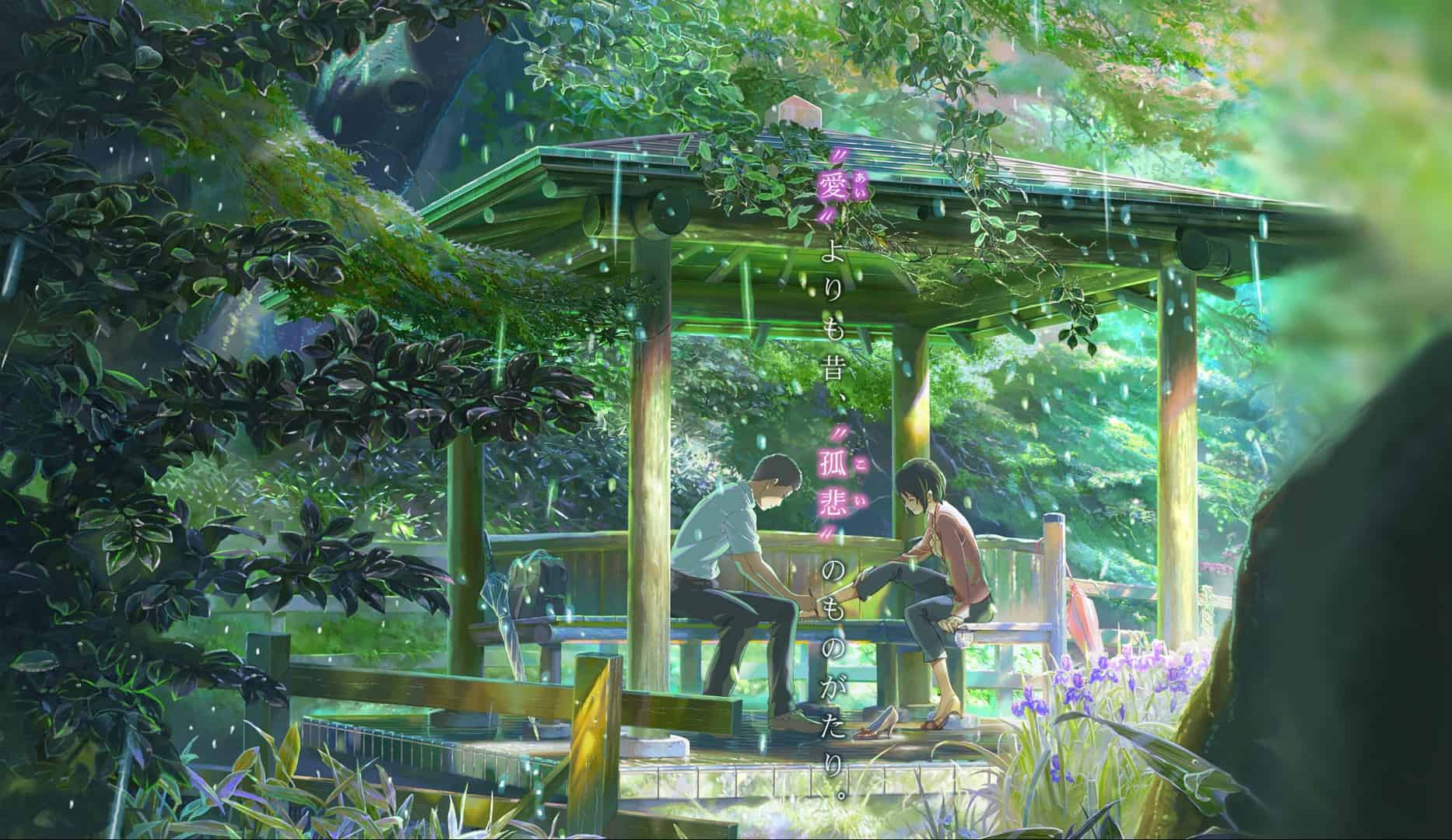
However, it was executed well that it seemed to belong in another universe rather than this one. The rain is yet another crucial aspect. The rain, which is the main theme of this film, was really spine-chilling.
Again, it is outstanding in terms of character animation. The production company and art staff did an excellent job of beautifully bringing each character to life.
I honestly don’t know how much more I can say about how fantastic the condition of these drawings is because they were made with such skill. I wholeheartedly commend this anime for its development of characters.
I wasn’t sure how they had managed to catch my attention so quickly with characters I hardly knew at all. They were both concealing something from each other, as well as from us, those watching, and from the rest of us.
9. Spice and Wolf
Spice and Wolf may at first appear to be terrifying if you are unfamiliar with what you’re getting into. The first episode and almost every episode that comes after it are essentially 24 minutes of chatting. Mostly with economics. Even medieval economics.
This is entirely a by-product of how fascinating the characters are and the manner in which they interact. Being a businessman, Lawrence always views situations in terms of money.
Making money, spending it, or maintaining tabs on the debt Holo accrued while they were traveling. He constantly maintains some internal separation from the events taking place around him.

Up until the moment that Holo seems to be in danger, at which time he gets frightened and enraged when others he tries to call for help fail to respond quickly enough. In spite of his activities, it becomes clear over time that he has developed concern and attention for Holo.
The persona of Holo is really intriguing. She acts more like a little child than a divinity that has been around for many hundred years. She becomes giddy over food to the point that she demands Lawrence take her away to another city so she may have apples marinated in honey.
She attempts to portray herself as a divinity by boasting about herself or disparaging people; she has no interest in whatever they accomplish.
However, this merely makes her come out as a little child trying to impress anyone by boasting. With little to no real contact with anyone, she is actually lonely despite her boasting and blustering, having watched over a single wheat field for decades.
10. Servant x Service
Servant x Service has a very interesting and engaging plot. Every character had a unique trait.
For instance, the new workers would frequently tease Lucy about her airheadedness and have funny miscommunications. In the end, Hasebe’s lazy yet intelligent mentality would resemble Haven’t You Heard?
The action centers on the routines of government office workers. One of the major characters, Lucy, aspires for a position at the company to exact revenge on the official who gave her outrageously lengthy name approval.
The group learns that dealing with irate citizens and bizarre, aloof co-workers on a daily basis makes being a government servant challenging.
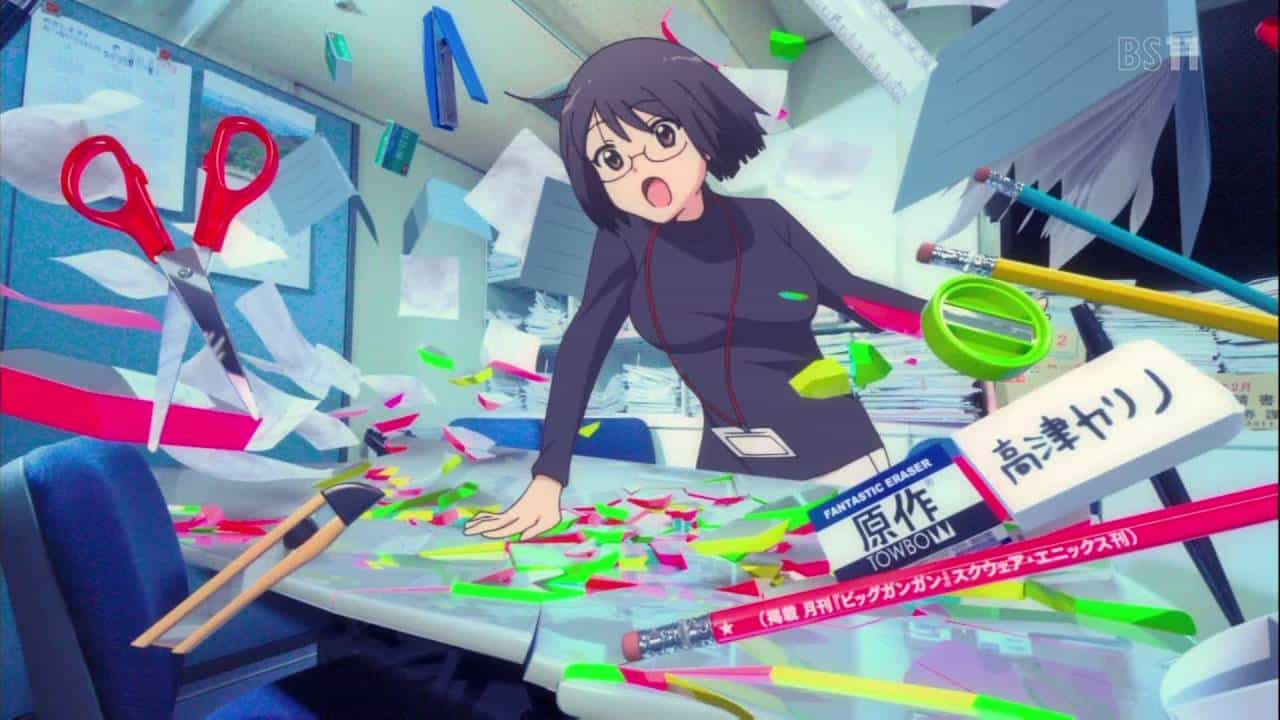
Thirteen episodes chock with of aspects that fall under the humor, slice-of-life, and romance categories. In terms of format, Servant x Service really does have a lot in common with American workplace rom-coms.
A collection of musicians called Monaca was mostly responsible for the music. Except for the opening music, it honestly did not really make a lasting effect on me. Although each scene made effective use of the various music, they weren’t strong enough on their own.
Overall, Servant x Service is a fantastic choice for anyone looking to add a little rom-com to their viewing list.
Even though the love subplots don’t exactly have a clear resolution, they reach their most satisfying finish in the end. They do an excellent job of conveying that both protagonists have ended up together, though.
11. Barakamon
The arrogant Seishuu Handa hits a curator who criticized his artistic endeavors for being unoriginal, thus starting the narrative of Barakamon.
He follows his father’s advice and travels to Gotou Island to chill down. His interactions with the locals and his exposure to daily life there helped him develop both as a calligrapher and as a person.
There is no actual overarching narrative for the remainder of Barakamon after this manner of story setup. This is standard and symptomatic of any slice-of-life television program.
Barakamon is satisfied to record Handa’s interactions with the villager and their evolving connections, occasionally noting a development in Handa’s calligraphic expression of himself.
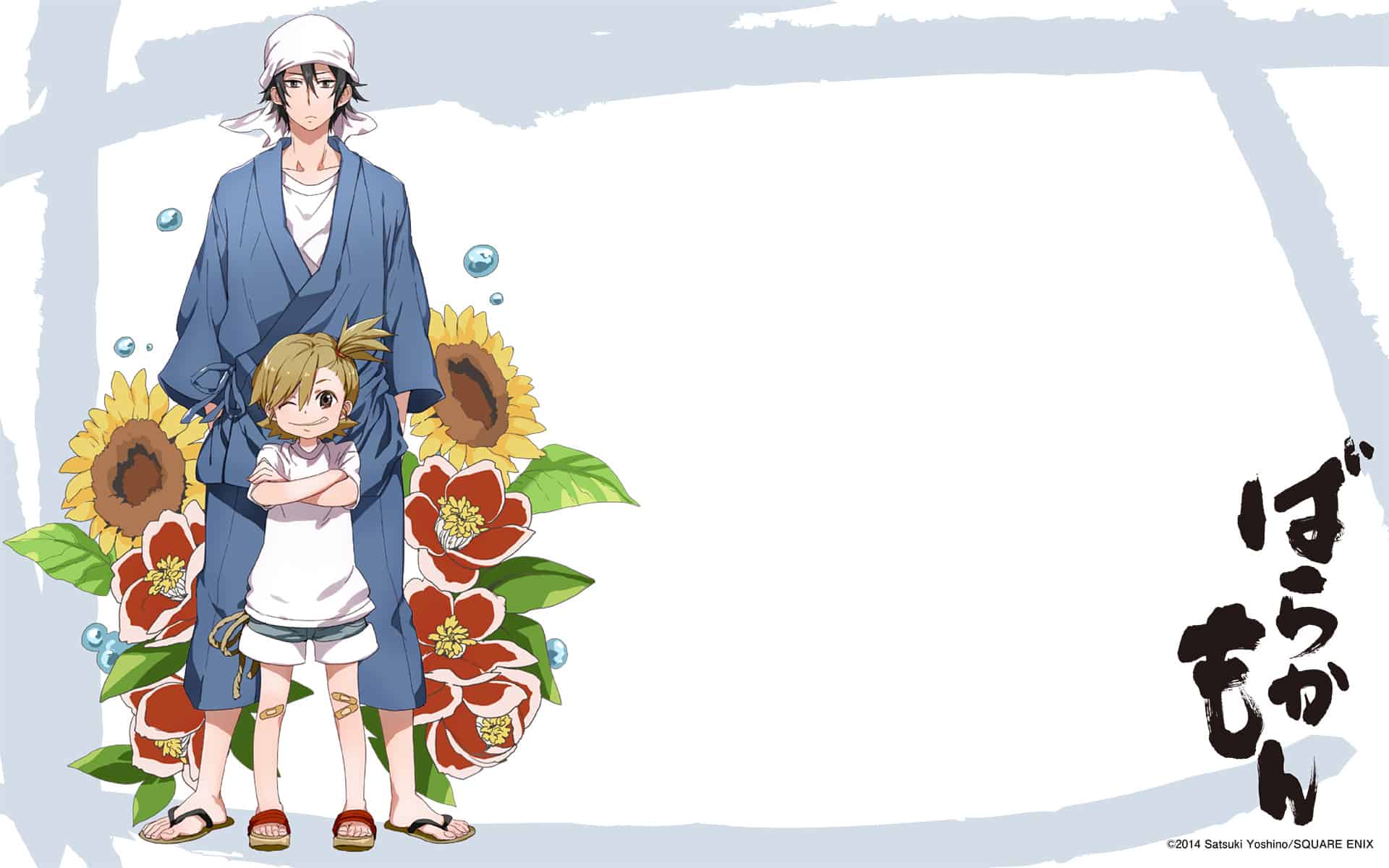
Almost all of these original ideas were the result of realizations that were sparked by his interactions with the inhabitants of Gotou Island.
As a result, the narrative emphasizes how it develops via Handa’s interactions with others around him. Handa has breakthroughs and progress outside of only his calligraphy as he interacts with others and gains knowledge that aids in his personal development.
This strikes me as a very powerful point for Barakamon. Since the work primarily focuses on Handa’s development and evolution, it is important to portray the emergence and maturity of the main character in a subtle and implicit manner.
Handa’s shift through time is handled with consideration for the viewers. It slowly comes to pass as a result of different things merging together over time and is done so with respect.
The audience may invest significantly in the development of the program thanks to Handa and Naru’s maturation and their well-managed relationship.
12. Usagi Drop
Daikichi Kawachi, a 30-year-old bachelor, has a solid career but spends his free time aimlessly. He goes back to his ancestral home to offer his respects when his dad’s grandfather passes away unexpectedly.
A strange young girl named Rin greets him when he gets to the home, and to Daikichi’s surprise, she turns out to be his maternal grandfather’s adopted daughter!
The awkward and reserved young woman is shunned by her father’s family members because they believe she is embarrassing the deceased man’s memory.
They also refuse to provide for her after his passing. Daikichi declares that he will take Rin in despite his knowledge that he is a young, unmarried man with no prior experience with childcare because he is incensed by their lack of consideration for Rin.
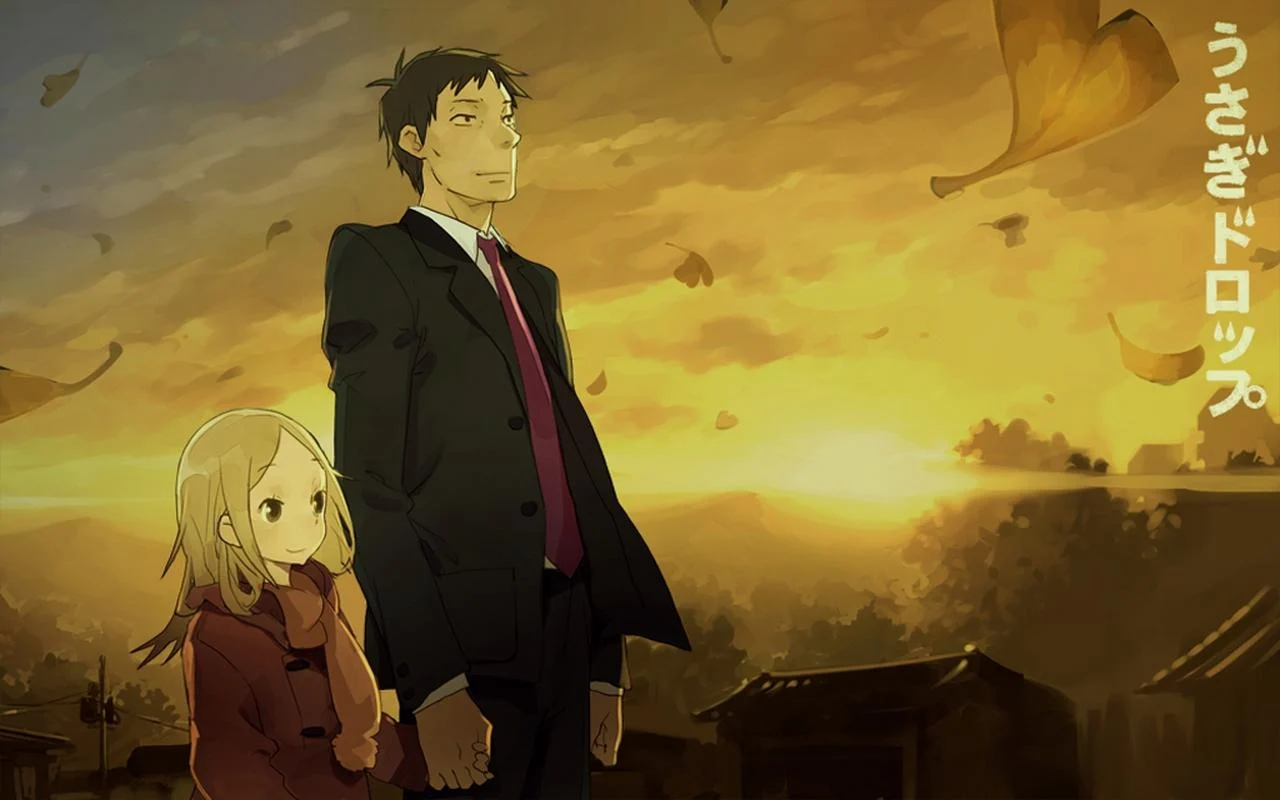
Usagi Drop begins with a sketchy drawing of a guy and a little child strolling hand in hand in a park. A middle-aged guy named Daikichi is shown being shocked awake from this ominous dream as the scene fades. Daikichi meets a timid little girl when he visits his family’s house the next morning for his grandfather’s burial.
When they find out that his Ojiisan has fathered an illicit daughter called Rin, they are shocked to learn her identity. Daikichi decides to take care of Rin after seeing a family argument about who would be responsible for the little girl.
Despite being single and lacking parenting experience, he is unwavering in his resolve to take care of the six-year-old girl, who is essentially his aunt.
Daikichi has to adjust to being a “single father” all of a sudden while looking for Rin’s mother. He naturally struggles with attempting to balance his employment and family responsibilities, just like numerous new parents do.
Honorable Mention
Mangaka San to Assistant
The series follows the lives of a manga artist and his assistant as they work together to create a manga. It is a lighthearted story that explores the relationship between the two main characters, Aito Yuuki and Ashisu Sahoto, as they work together to create their manga.
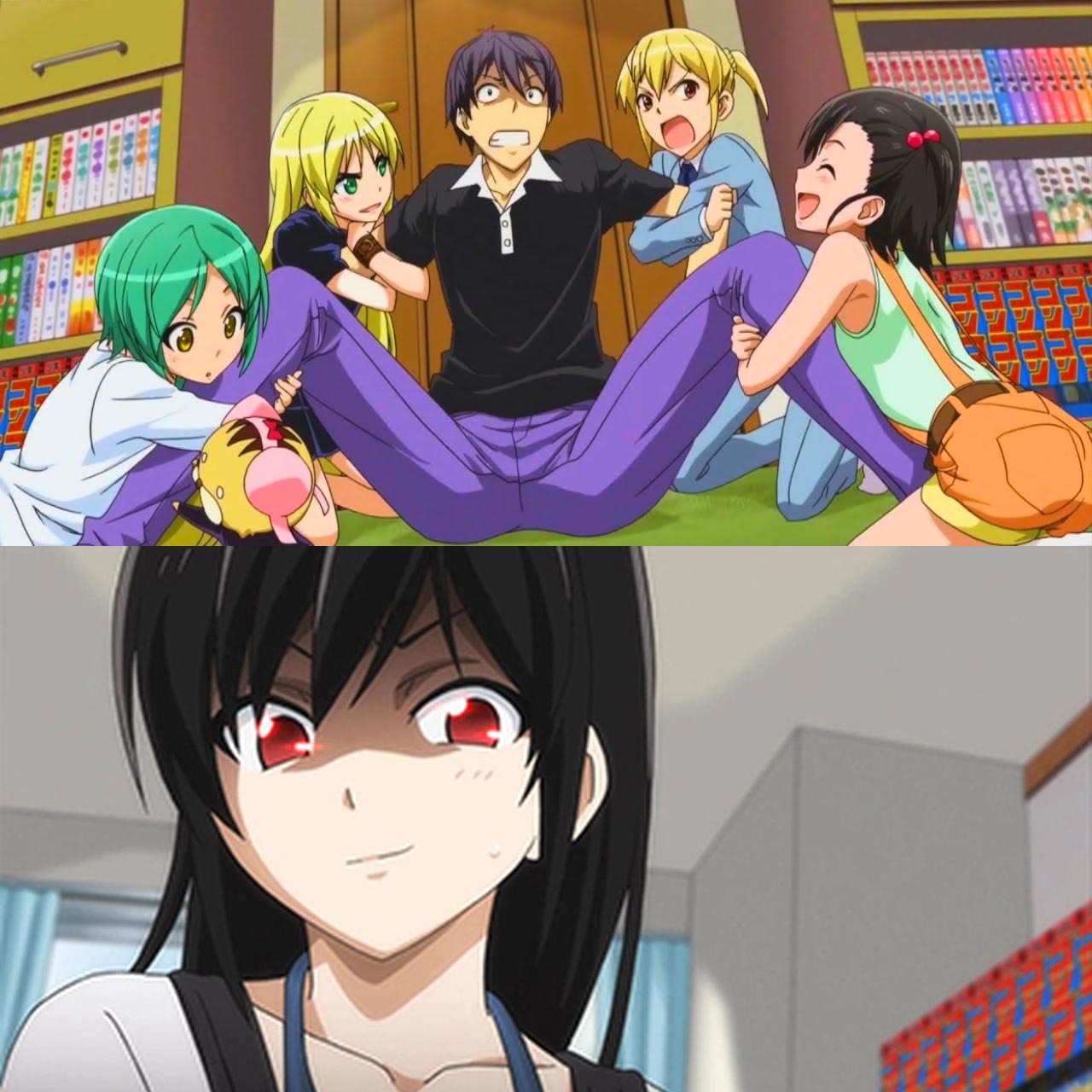
Valkyrie Drive: Mermaid
